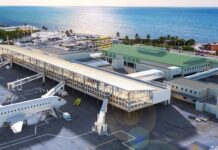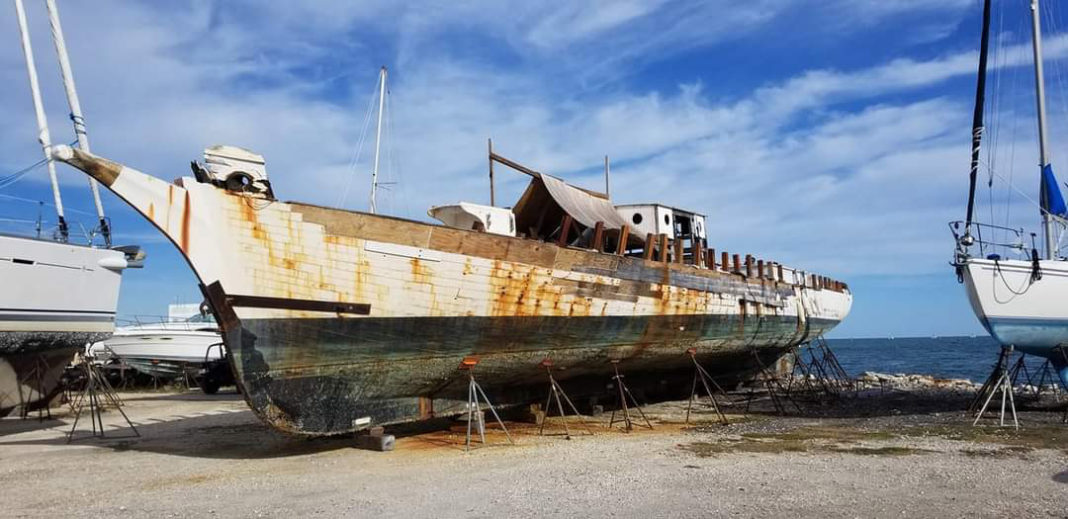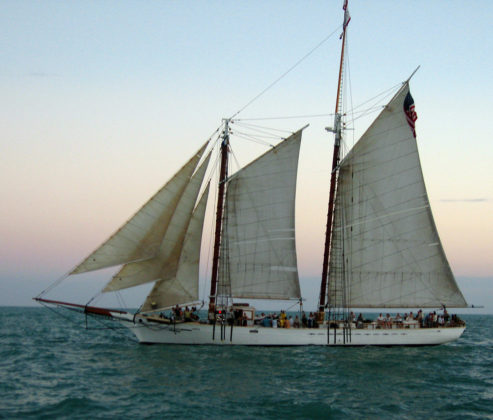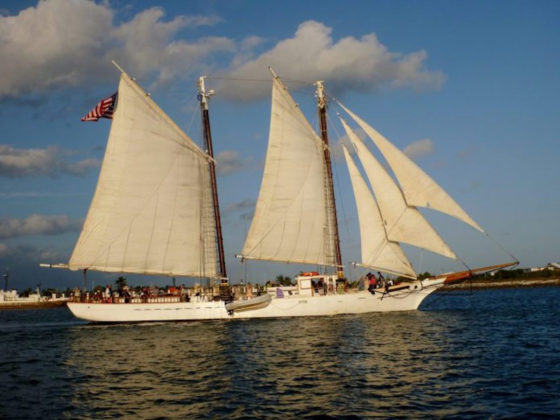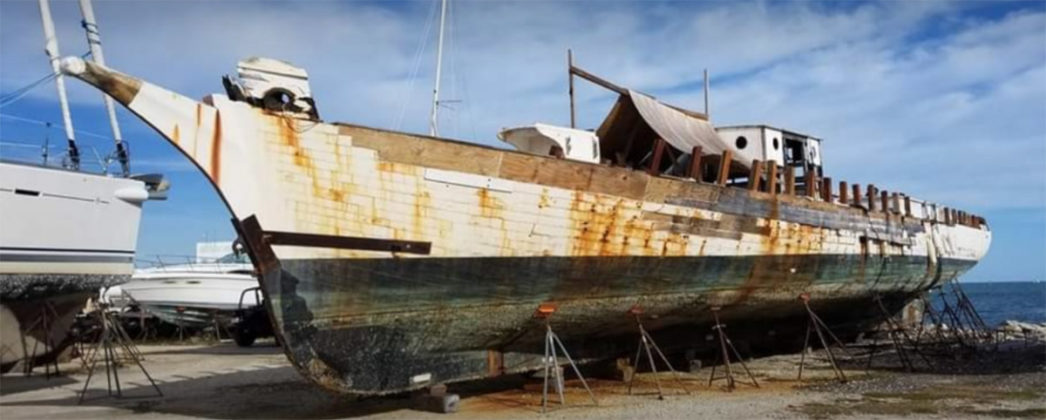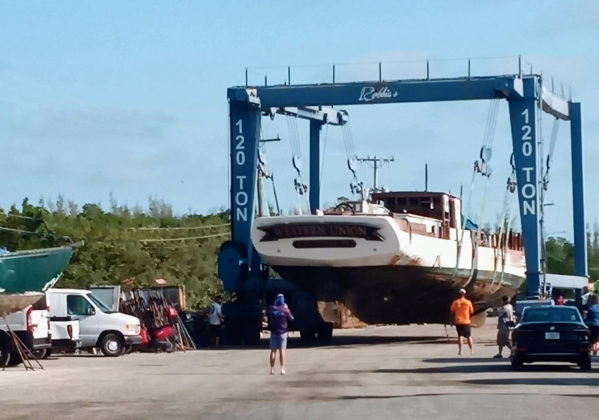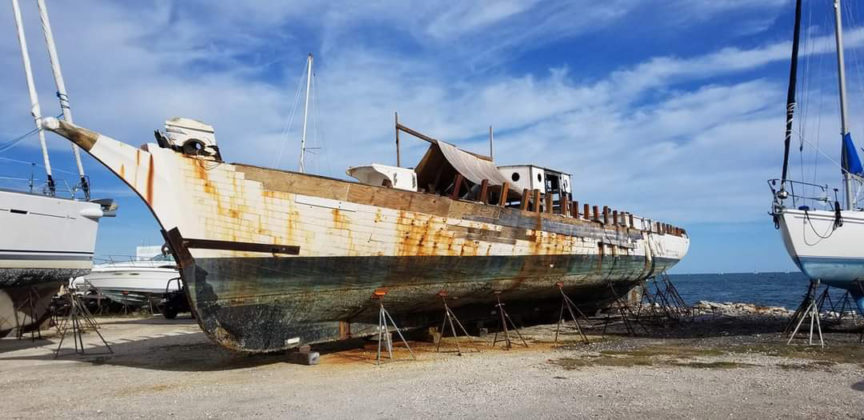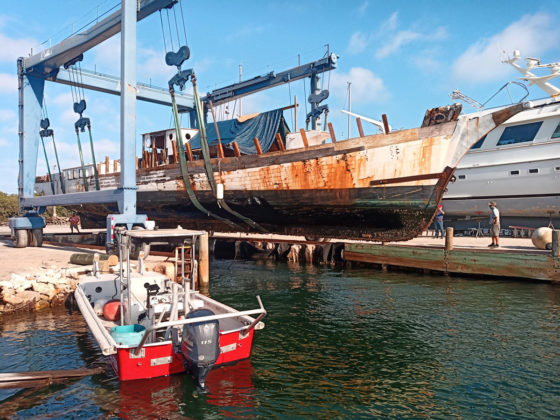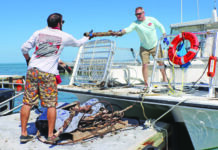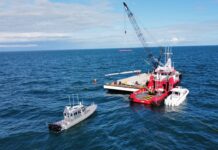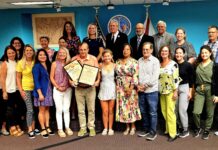The once stately schooner Western Union, flagship of Key West and the state of Florida, is an unrecognizable shell of her former self, nearly indistinguishable from the other propped-up vessels “on the hard” at Robbie’s Marina on Stock Island.
The 1939 schooner once serviced the underwater telegraph cables that enabled communication between Key West, Cuba and the Caribbean. In all, she laid 30,000 miles of underwater telegraph cable before being converted to a passenger vessel in 1974. The 130-foot schooner was added to the National Register of Historic Places in 1984.
Schooner Western Union returned to Key West in 1997 and for 10 years was operated by Historic Tours of America, offering sunset sails and private charters from the foot of William Street, next to Schooner Wharf Bar. For 10 years, HTA lost $100,000 a year to the vessel, and eventually donated it to the nonprofit Schooner Western Union Preservation Society, which had been formed by Key West businessmen to save the flagship.
But time had taken a grave toll on the old wooden boat. A partial restoration got the ship sailing again in 2011, but Western Union failed a 2014 Coast Guard inspection.
Starting in 2016, she spent three years at a boatyard in Tarpon Springs, Florida, where shipwrights and preservationists worked to restore the ship using funds raised by the preservation society as well as Tourist Development Council grants and $1.24 million in state funding secured in 2019 by then-Florida Keys State Rep. Holly Raschein.
But funding ran out and storage bills accrued in Tarpon Springs. Western Union was towed back to Key West in December 2019 without sails, masts or rails around the deck.
One person close to the project and familiar with the industry described the schooner’s struggles as three-fold: First, the project lost three of its restoration leaders in short course — Bill Barry, Capt. Frank Holden and Richard Manley of Manley deBoer. In addition, the captain who was hired to oversee the restoration in Tarpon Springs was entirely unfamiliar with wooden boats and was ill-equipped for the responsibility, he said. Finally, COVID hit and challenged all nonprofits to raise any funding.
“We had three deaths of the restoration leaders, an inexperienced person overseeing the work and then the pandemic,” our source explained. “We now have the expertise of master shipwright Harold Burnham, who led the $12 million restoration of the historic wooden ship Ernestine.”
Preservation Society treasurer John Dolan-Heitlinger provided an update last month to the Key West Bight Board, saying the schooner remains on the hard at Robbie’s Marina on Stock Island. “The schooner is towards the back of Robbie’s Marina with its stern facing the water supported by heavy timbers and boat stands,” Dolan-Heitlinger reported in January. “Robbie’s management will allow her to remain at Robbie’s and be worked on for no charge. We are trying several combinations of equipment to keep the schooner regularly washed down with seawater to preserve the wood of the vessel. We are developing plans for this next stage of the restoration and meeting with potential shipwrights,” the report states. “We are researching opportunities for grants and other support. We have discussed additional preservation and funding efforts … including protectively wrapping the boat hull. The Massachusetts shipwright Harold Burnham is working on dividing the restoration plan he developed for us into four sections that can be used to pitch requests for support to different potential funding supporters,” Dolan-Heitlinger’s report states.


